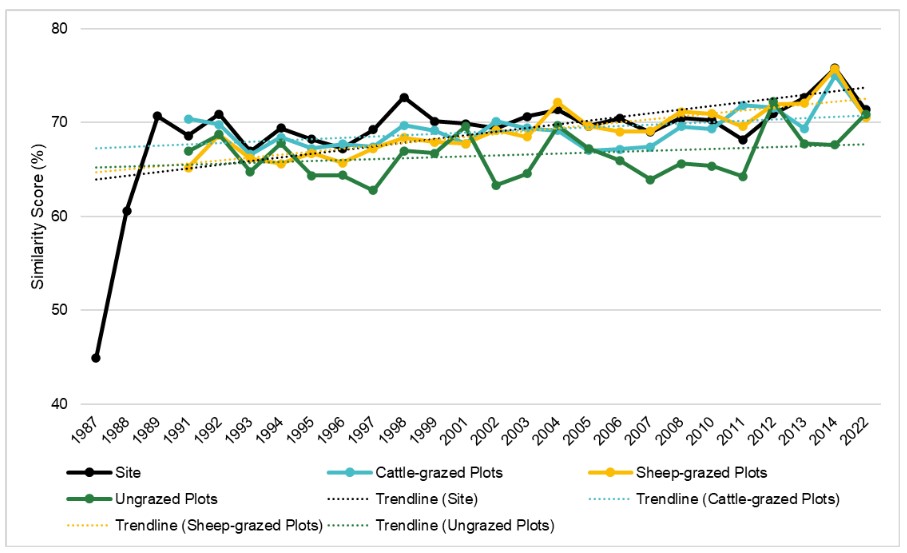Cassandra Lavigne
Hello, my name is Cassandra, I was a graduate student at UCL studying aquatic conservation, and my dissertation pertained to floodplain meadows. I would like to send a big thank you to the Floodplain Meadows Partnership for inviting me to participate in a Grassland Survey Course prior to sampling, for helping with plant identification, for supplying historical data, and for their overall advice throughout the project.
Meadows containing the Alopecurus pratensis-Sanguisorba officinalis community (Burnet floodplain meadow, MG4) are now very scarce throughout the United Kingdom. Researching the long-term effects of restoration projects is therefore necessary to guide our next steps and to support strategies to mitigate further loss of the ecosystem.
Hay-cutting followed by cattle-, sheep- or no-grazing has been trialled at Somerford Mead in Wytham, United Kingdom from 1991 to 2018 with the goal of restoring the field to an MG4 plant community. Since 2018, the site has seen uniform management, comprising an annual hay cut followed by cattle grazing, begging the question as to whether effects of past treatments still have an impact today, and whether Somerford Mead is still progressing towards an MG4 meadow.
In order to assess this, in June 2022 I re-surveyed the 90 quadrats that had been annually surveyed as part of the original research trial every year from 1991 to 2013 by Dr Alison McDonald and her team of students, and then finally in 2014, by UKCEH. This historic dataset has been digitised by the Floodplain Meadow Partnership (sponsored by the Ecological Continuity Trust) making it available for researchers like me.
The results of my study suggest a legacy effect in the composition of the community, although the differences in species richness between historical treatments are statistically significant (p>0.05). Results also suggest that the shift towards the target community is not yet complete even 31 years after restoration, but that an upward trend exists in terms of its similarity to MG4 (see Fig. 1.) These findings suggest that grazing by either species aids restoration. A similar experiment is now perhaps needed to see if reintroducing the traditional management of a double cut is as effective (or more so) than grazing. This study certainly demonstrates that restoration is a long process. That being said, the sooner we start restoring, the sooner we will see results.
 Figure 1. Czekanowski’s coefficient of similarity between the recorded data and Rodwell’s published floristic table for MG4.
Figure 1. Czekanowski’s coefficient of similarity between the recorded data and Rodwell’s published floristic table for MG4.